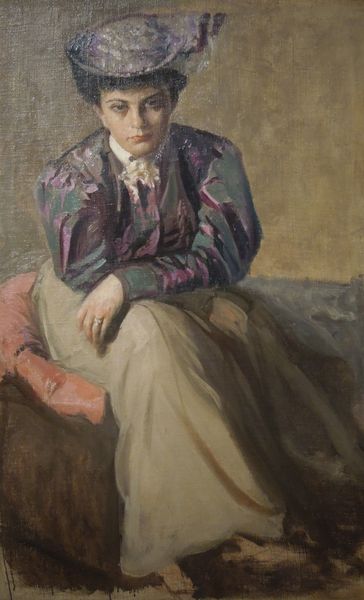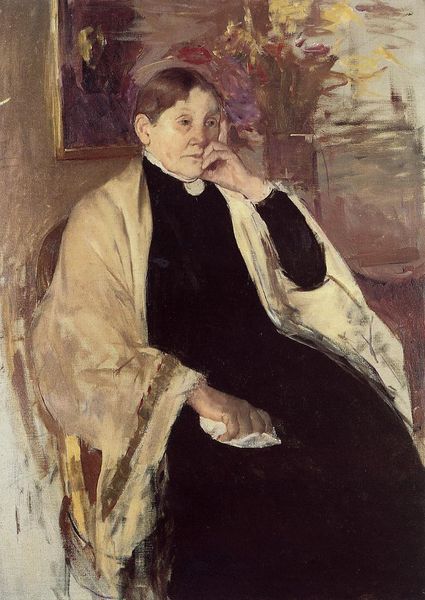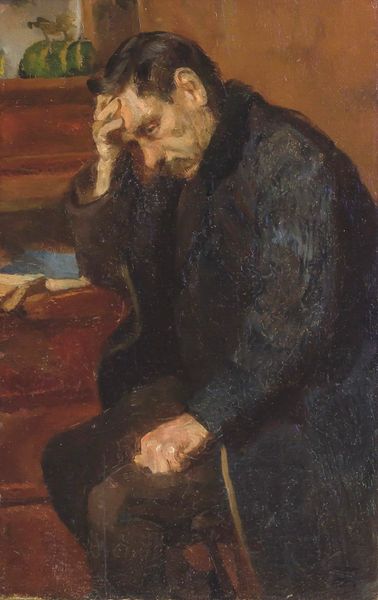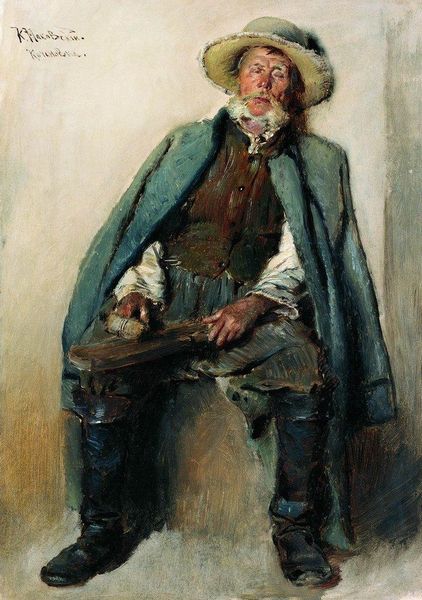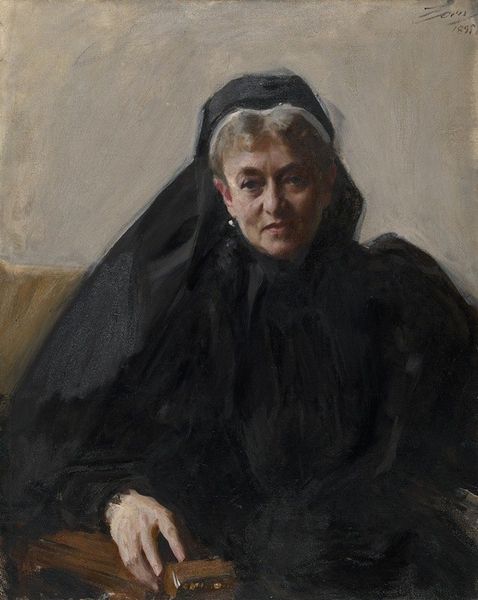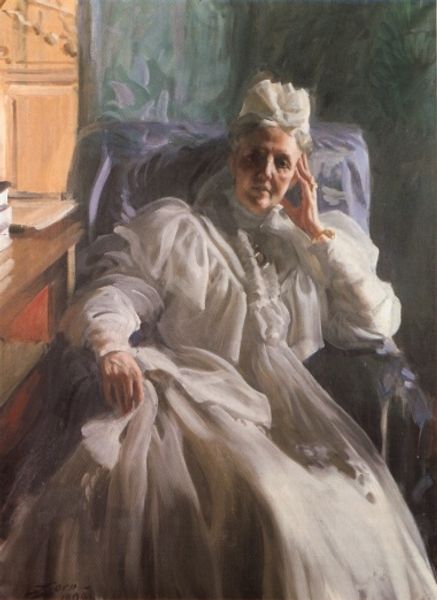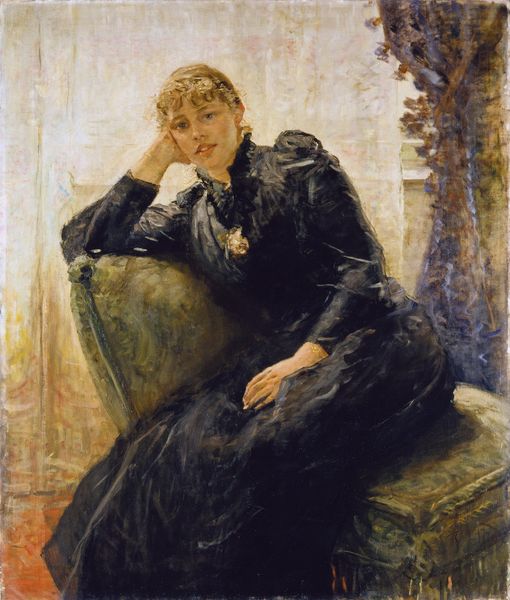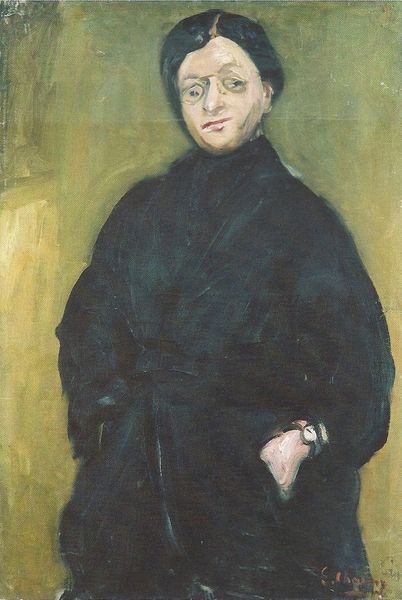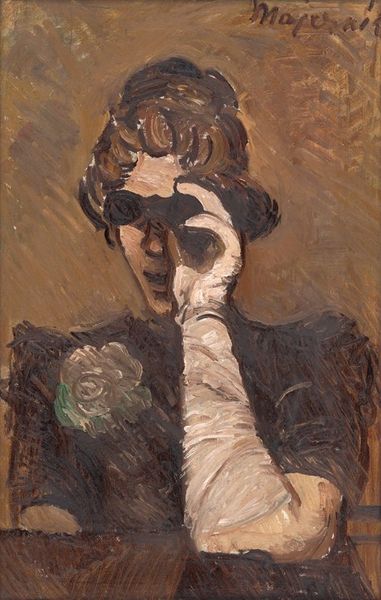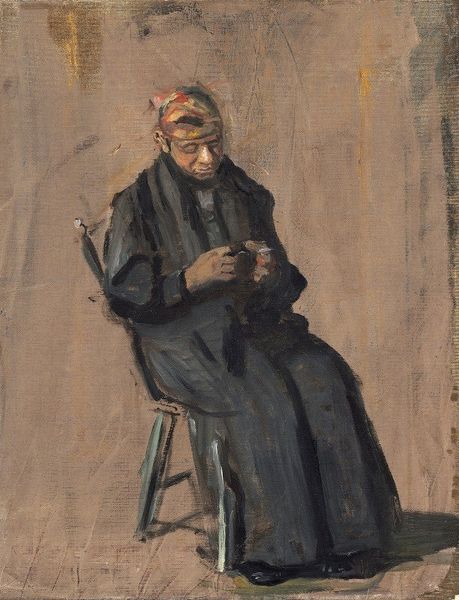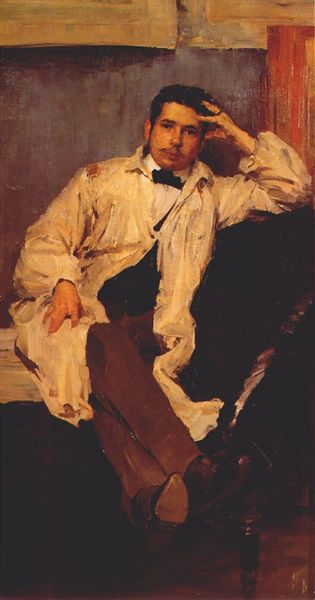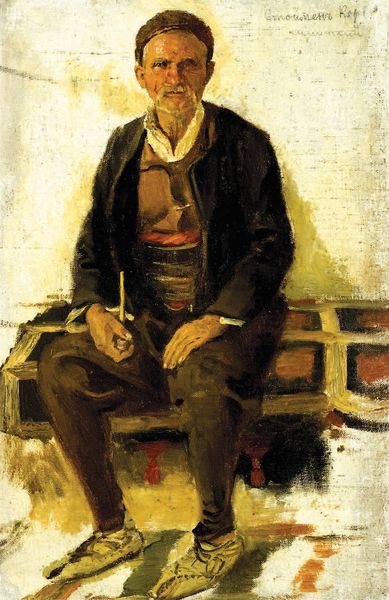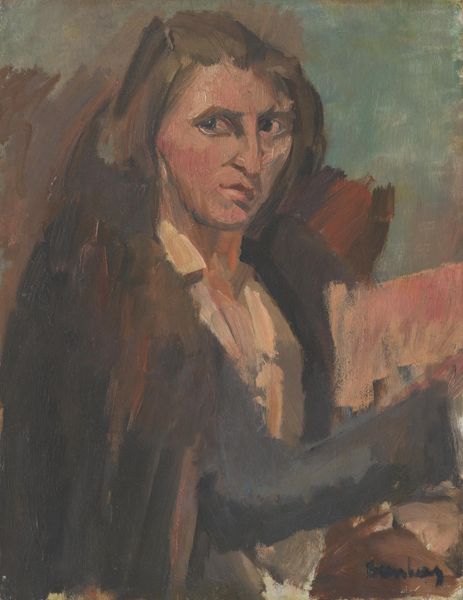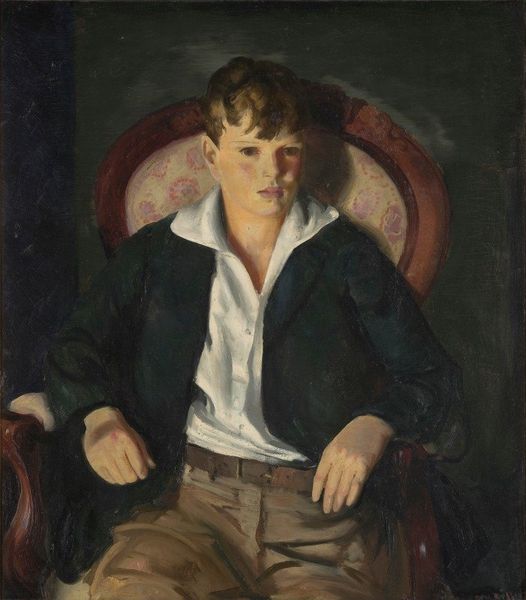
painting, oil-paint
#
portrait
#
painting
#
oil-paint
#
oil painting
#
symbolism
Copyright: Public domain
Magnus Enckell painted this portrait of Beda Stjernschantz in Finland around the turn of the 20th century. The image is striking for its psychological intensity and the sitter’s androgynous appearance, which challenges conventional gender roles. Enckell and Stjernschantz were both part of the Symbolist movement, which sought to express subjective emotions and ideas through art. In this context, we can understand the portrait as a representation of Stjernschantz's inner world rather than a straightforward depiction of her physical appearance. We see that Finland at this time was experiencing a period of cultural and political change. The Symbolist movement in Finland was associated with the Fennoman movement, which sought to promote Finnish language and culture in the face of Russian influence. Enckell’s art was considered progressive. He was openly homosexual, and his art often challenged traditional social norms. To understand the social conditions that shaped this artwork, we can examine the cultural and political context of Finland at the time and the artist's biography. We must ask what role art played in the social and political life of the time.
Comments
No comments
Be the first to comment and join the conversation on the ultimate creative platform.
